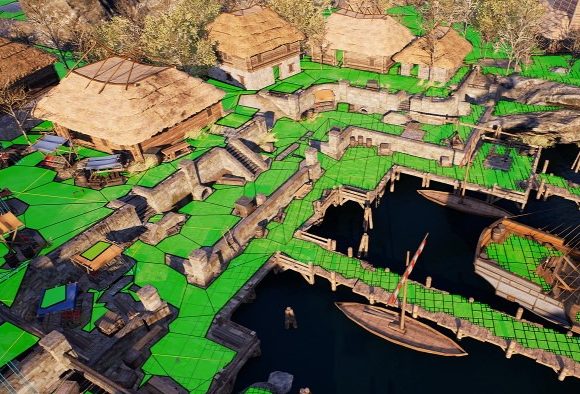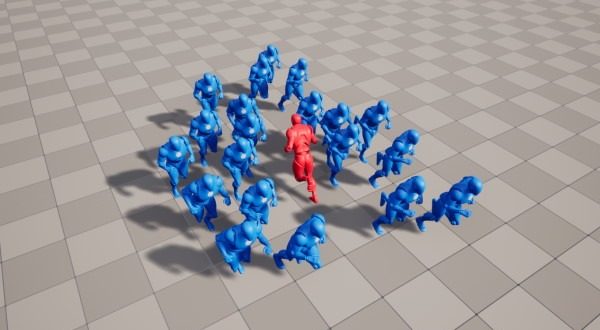Hybrid Navmesh
Mercuna utilises an innovative hybrid navmesh/navgrid for ground-based pathfinding. This high-performance navigation graph combines the advantages of very fast spatial lookup and low memory of a quadtree, with efficient pathfinds through a polymesh.





